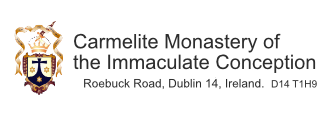30th Sunday in Ordinary Time 2022
Eccles 35:12-14,16-19, 2Tim 4:6-8,16-18, Luke 18:9-14
On the feast of Saint Luke (18thOctober) the Liturgical App, Universalis, posted the painting by Roger van der Wayden (1400-1464) of “Saint Luke drawing the Virgin Mary”. It underlines for us the reason for St Luke being known as the Portrait Painter among the Evangelists. Good portrait painters need to understand human beings and human nature. The characteristics of any person, including their strengths and weaknesses will be obvious if the portrait painter knows him or her well.
Saint Luke has described many of the central characters of the New Testament for us. It is through his descriptions of Mary, Elizabeth, Simeon, Anna, Peter and the other apostles that we are able to know these people and relate to them.
In relating for us the parables of Jesus, Luke builds up the portrait of the characters that Jesus has created in order to teach us the lessons of the Scriptures. In today’s Gospel reading, the parable of the ‘two men who went up to the Temple to pray’, Luke makes the two men come alive. It’s as if we have come across them in real life!
One of the men is a Pharisee. In our Christian tradition Pharisees are not given a great press. They are seen as very legalistic, self-righteous and judgemental. But there is another side to Pharisees. They are very conscientious and dutiful. They are meticulous about obeying the law of God which they apply to every aspect of their lives. Saint Paul was a Pharisee in his pre-Damascus days. Nicodemus, the man who gave the tomb for the body of Jesus was a Pharisee. They were not all villains.
The Pharisee in the Gospel reading today was a good living man. He went beyond what was required by the law. He fasted two days a week. However, he was proud – of his own righteousness. And that would not be so bad if he refrained from being so judgemental of others. When he prayed ‘he said this prayer to himself’!!
Tax collectors were not the most popular members of society at the time. Like all people who do business with money, they contested with their clients and customers and because they are required to let their heads rule their hearts, they could at times seem to be harsh and unfair and unjust. Again, tax collectors were not by nature bad people. From the Gospels Saint Matthew is perhaps the Tax Collector we know best!
The Tax Collector in today’s parable recognised all of the shortcomings in his own life. His prayer and his attitude was “God be merciful to me, a sinner”. His prayer was between himself and his God. Of course, that is what prayer is – the expression of our relationship with God.
When we “go up to the Temple to pray” we go into the Presence of God. Rightly, we leave aside the things of our life, our business, our concerns and anxieties, fears and upsets. We leave aside our opinions and judgements of people and situations. We are fully in the presence of God. Then we can be true to ourselves and to God.
Truth before God is what is called humility. And as the first Reading today tells us “The humble person’s prayer pierces the clouds …. The Lord will not be slow”. We are called to come to the Lord with humble and contrite heart for “those who exalt themselves will be humbled, but those who humble themselves will be exalted”.
“In the Lord my soul shall make its boast; His praise always on my lips” (Psalm 32:2-3)
